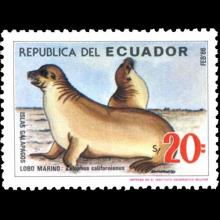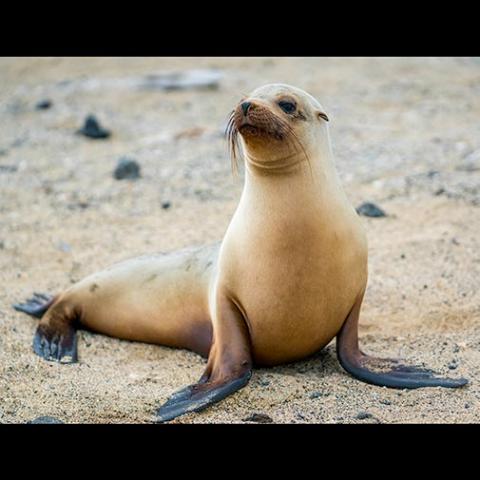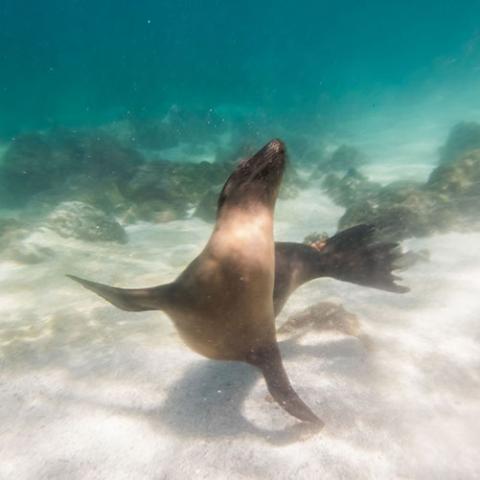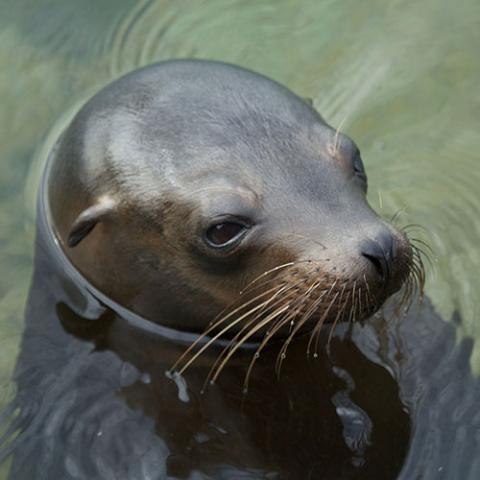NAMES
TAXONOMY
Ecuador
Issued:
Stamp:
Zalophus wollebaeki
Ecuador
Issued:
Stamp:
Zalophus wollebaeki
Ecuador
Issued:
Stamp:
Zalophus wollebaeki
Genus species (Animalia): Zalophus wollebaeki
The Galápagos sea lion (Zalophus wollebaeki) is a species of sea lion that breeds on the Galápagos Islands and, in smaller numbers, on Isla de la Plata (Ecuador). Being fairly social, they are often spotted sun-bathing on sandy shores or rock groups or gliding gracefully through the surf. Their loud bark, playful nature, and graceful agility in water make them the "welcoming party" of the islands. They are the smallest sea lion species.
Physical characteristics
Slightly smaller than their Californian relatives, Galápagos sea lions range from 1.5 to 2.5 m (4.9 to 8.2 ft) in length and weigh between 50 to 250 kg (110 to 550 lb), with the males averaging larger than females. Adult males also tend to have a thicker, more robust neck, chest, and shoulders in comparison to their slender abdomen. Females, by contrast, have a longer, more slender neck and thick torso. The male's sagittal crest enlarges when he reaches sexual maturity, forming a small, characteristic bump-like projection on his forehead. Adult females and juveniles lack this trait and have a nearly flat head and little or no forehead. Galápagos sea lions, compared to California sea lions, have a slightly smaller sagittal crest and a shorter muzzle.
Both male and female sea lions have a pointy, whiskered nose and long, narrow muzzle. Young pups are almost dog-like in profile. Another characteristic that defines the sea lion is the pinnae of the external ears, which distinguish them from seals. The foreflippers have a short fur extending from the wrist to the middle of the dorsal fin surface, but other than that, the flippers are covered in black, leathery skin. Curving posteriorly, the first digit of the flipper is the largest, giving it a swept-back look. At the end of each digit is a claw, usually reduced to a vestigial nodule that rarely emerges above the skin. Although clumsy on land, sea lions are agile in water. With their streamlined bodies and flipper-like feet, they easily propel themselves through crashing surf and sharp coastal rocks. They also have the ability to control their flippers independently and thus change directions with ease.
When wet, sea lions are a shade of dark brown, but once dry, their color varies greatly. The females tend to be a lighter shade than the males and the pups a chestnut brown. Pups are born with a longer, brownish-black lanugo that gradually fades to brown within the first five months of life. At this time, they undergo their first molt, resulting in their adult coat. The age of maturity for Galápagos sea lions is about 4–5 years. The life span is estimated to be 15–24 years.
Reference: Wikipedia
Photos: Casey Kleba, Brian Gratwicke, Diego Delso




